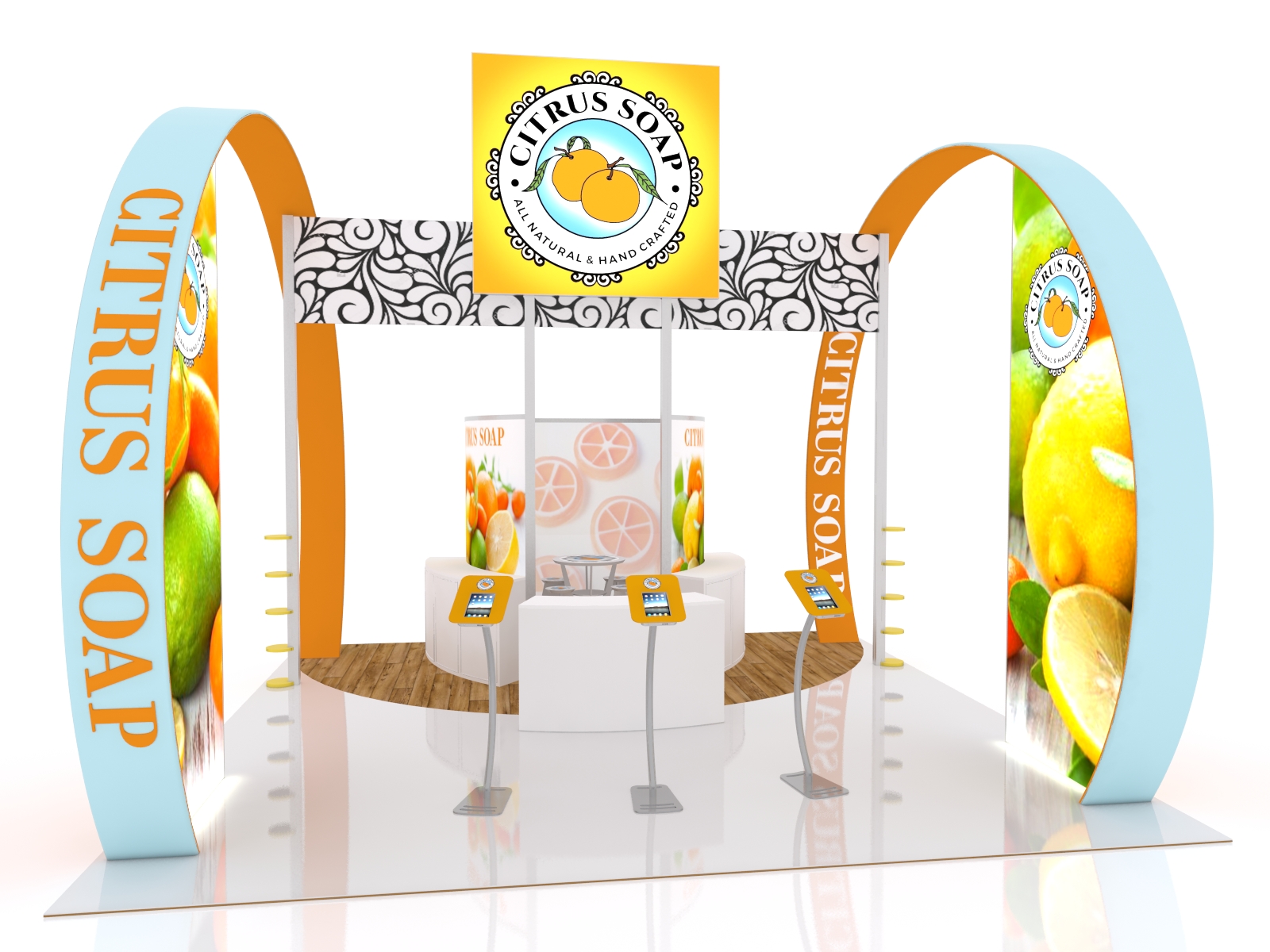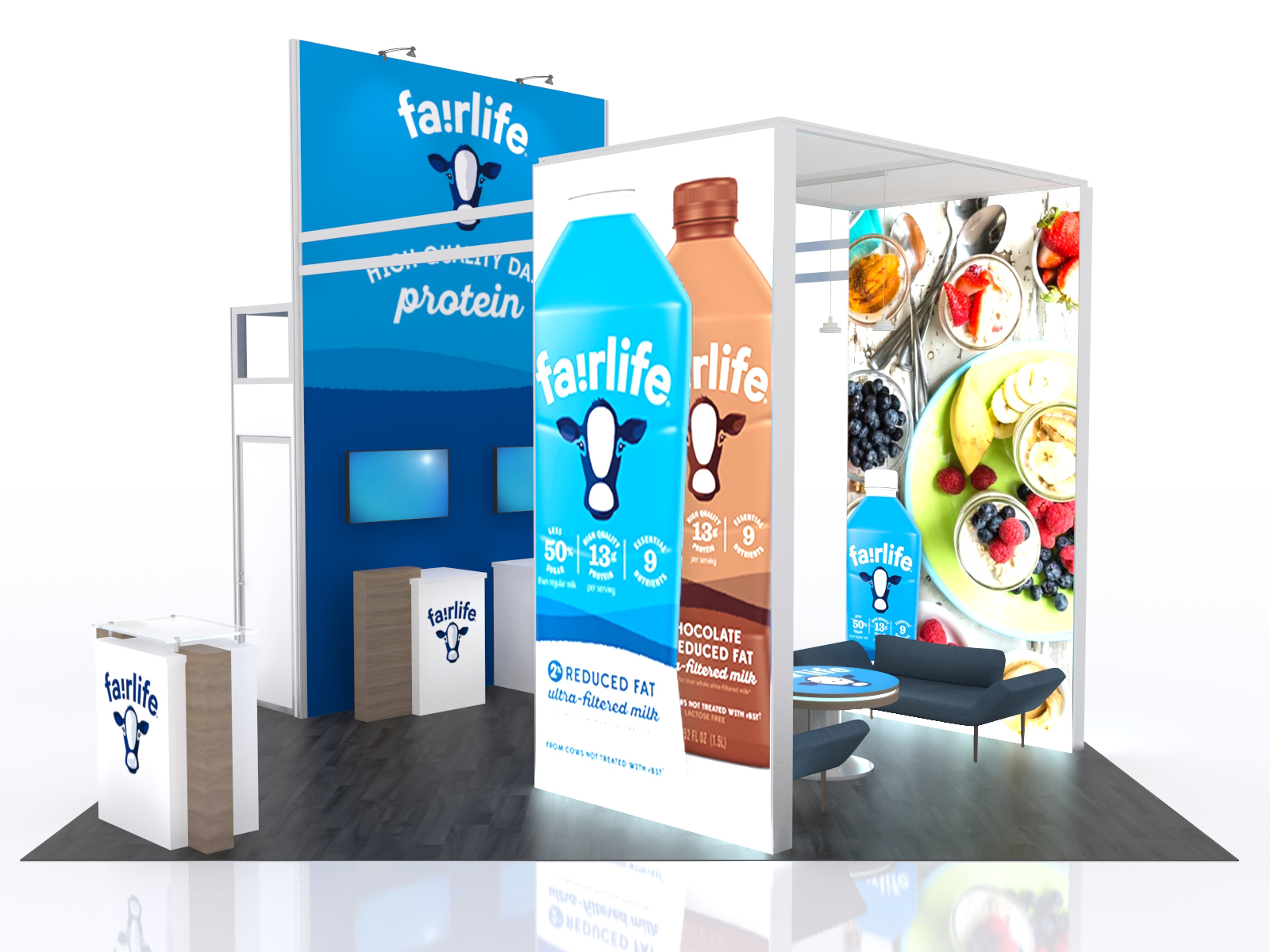Let’s start with the obvious: A trade show budget is a plan for how much money you will spend on a trade show. It should include all of the costs associated with the show, such as booth space, exhibit design and construction, freight, sponsorships, travel, lodging, marketing, and staffing.
But let’s take a step back and define “Budget.” It’s an estimate of income and expenses for a set period of time. While true in theory… in reality some people treat a budget like a suggestion, which changes and adjusts, whereas others consider it like an infallible document. Conflict arises when not everyone shares the same assumptions.
Anyone who has ever created a trade show budget knows that “things change” and “stuff happens.” Trade show expenses are notoriously fickle and unpredictable, and costs like freight, material handling, labor, and entertainment can vary from city to city and show to show. However, the COVID pandemic put show organizers and general show contractors on notice, and many have put cost and service predictability at the top of their list. It’s gotten better, and as a result, the mental health of CFOs has improved.
The Importance of a Detailed Trade Show Budget
If you haven’t created a trade show budget, both for individual shows and for your annual trade show marketing program, then the following information will get you started. It’s not complicated since there are a known number of expenses. Unfortunately, gathering those expenses isn’t always straightforward and those numbers can change, like freight, from one day to the next.
There are two sides to a trade show budget: the money spent and the return on investment or return on objectives. Let’s park ROI and ROO as topics for now since every company handles those differently.
A quick search on the Internet will yield multiple budget templates or programs. See Smartsheet or ExhibitDay for example. Below is a typical trade show spreadsheet/template…

Planning Out Your Trade Show Booth Budget
The size of your trade show budget will depend on a number of factors, including the size and type of show you are attending, the cost of booth space, the complexity of your exhibit, and the number of people you will need to staff your booth.
A good rule of thumb is to multiply the cost of your booth space by four to get a rough estimate of your total trade show budget. For example, if your booth space costs $10,000, you should budget around $40,000 for the entire show.
Here are some of the most common trade show expenses:
- Booth Space: This is the most expensive cost associated with a trade show. The cost of booth space will vary depending on the size of the show, the location of the show, and the time of year.
- Exhibit Design and Construction: The cost of your exhibit will depend on the size and complexity of your booth. If you are hiring a professional exhibit designer, you can expect to pay a few thousand dollars for the design and construction of your booth.
- Travel: The cost of travel will depend on the distance you are traveling and the type of accommodations you choose. If you are flying to a trade show, you can expect to pay a few thousand dollars for airfare and hotel.
- Lodging: The cost of lodging will depend on the location of the show and the type of accommodations you choose. If you are staying in a hotel near the trade show, you can expect to pay a few hundred dollars per night.
- Marketing: You will need to market your trade show presence to attract visitors to your booth. This could include printing brochures, creating email campaigns, or running social media ads.
- Staffing: You will need to staff your booth during the trade show. This could include hiring employees, contractors, or volunteers.
In addition to these common expenses, you may also have other costs associated with your trade show appearance, such as:
- Shipping and handling
- Insurance
- Entertainment
- Gifts
- Registration fees
- Meals
Trade Show Budgeting Tips
When it comes to budgeting tips, being an insider or expert on trade shows has its benefits. Every trade show professional will gladly share their budgeting tips (generally gratis), but most fall into three groups: planning, preparation, and personality. The three Ps.
Planning:
Most people are not planners. They react rather than anticipate. In the world of trade shows, there are hard deadlines whether it’s buying an exhibit, designing graphics, getting freight quotes, or completing order forms for show services. Earlier is better because there are early bird rates or because there are financial repercussions to waiting until the last minute. Those could be rush fees, overnight shipping charges, or overtime labor rates. The single most effective way to save money on your trade show program is to plan ahead.
Preparation:
This is similar to planning but doesn’t require forms or specific deadlines. For example:
- Will your literature, promotional products, or demos fit in the case or crate? Fewer packages usually means lower shipping and drayage charges.
- Does everyone understand their roles at the show and any financial guidelines, like per diem or client entertainment? Same with apparel in the booth.
- Have the exhibit set-up instructions been reviewed by your labor contractor? Are there assembly nuances they need to know that are not on the instructions? Like the position of the exhibit within the booth space.
- Does the show and/or show management offer new exhibitor training and/or welcome services? Those can supercharge the process of going from a newbie to a battle-scarred veteran.
Personality:
Trade shows are stressful, not just for the exhibitors but also for attendees, show management, general show contractors, and anyone who works to pull it all together. It can get tense fast because expectations are high, time is short, and lots of money is on the line. Being polite (and persistent if necessary) has benefits. People want to help people if they are gracious, respectful, and understanding. Entitlement and threats are usually counter-productive on the trade show floor.
10 Common Trade Show Budgeting Mistakes
- Not setting trade show marketing goals
- Not formulating a multi-year show schedule
- Purchasing when you should be renting an exhibit. And vice versa
- Missing early bird deadlines
- Not identifying or capturing pre and post-show costs
- Attending the wrong trade shows
- Not going big enough at the right trade shows
- Not capturing metrics – quantitative and qualitative
- Ignoring show leads
- Bringing the wrong people to the show
10 Strategies for Creating a Trade Show Booth on a Budget
You know there’s a difference between value and cheap, right? You don’t want a cheap display unless you only plan to use it once. Even then, it’s important to remember that the hardware, the graphics, the flooring, and any other accessories, like counters, literature racks, and tables are a reflection of your company and your branding. So, how can your trade show booth look professional on a budget?
1. Shop Smart
Let’s be honest. Your casual online search for a budget-friendly display will be overwhelming with more websites than you can possibly visit. Start by setting some parameters. Does it matter where the vendor is located? Do they offer trade show marketing advice and articles or just products? Do you get a bait-and-switch vibe from the website? Trust your gut. Reputable display websites selling value-priced displays should feel transparent and helpful without a “used car lot” feeling.
2. Email, Chat, Text, Phone Call, or None of the Above
You’ll have questions. And you should. Do they make it easy for you to communicate with them? Or do they restrict how you contact them by insisting you text, email, or complete a form? You should be able to communicate with a vendor via a method that’s most comfortable for you. Not the most comfortable for them.
3. The Warranty
It’s important, not only during the first month or two but for the next year (or even more). Trade shows, transportation, and labor can be brutal on display hardware. You need to understand what’s covered and how quickly the provider can respond.
4. Graphics Matter
Let’s divide graphics into two categories: design and production. Always work with a professional graphic designer who has experience with 3D projects. Your nephew Randy may have designed your garage sale flier but that doesn’t make him qualified to create the graphics for your display. Secondly, ask the provider to explain their graphic production process and where (geographically) it’s being printed. You may not understand all the details but asking and knowing creates expectations. There’s a WIDE RANGE in graphic quality. And your graphics will make or break the success of your trade show experience.
5. Replacement Parts
You’re going to lose or break a part. That’s not a warning. It’s a fact. Are their replacement parts available and how quickly can they be sent? Or, for many budget portable displays, the expectation is “If it breaks, throw it away and buy a new one.” Your call.
6. Purchase or Rent
We can’t answer this in one or two sentences. Ask about the benefits of both. Ask to see examples based on your budget. Then make an informed decision.
7. The Rental Provider
If you do decide to rent, there are two options. You can rent from an exhibit house or you can rent from the show’s General Service Contractor. With an exhibit house, you’re more likely to get the design you want. With the GSC, you’re more likely to save a few bucks but be restricted to a handful of standard designs.
8. Flooring
Feel free to pretend you don’t need flooring. You do! Just suck it up and rent or buy it. It’s that simple.
9. Ask for Advice
Trade show marketing, which includes purchasing an exhibit, improves with experience. If you don’t have that experience, then find someone who does. You’ll save money and greatly improve your odds of having a successful show.
10. Pre-show Marketing is a MUST!
Most exhibitors assume it’s the responsibility of the show organizer to drive attendees to the show. And they would be right. But it’s not their responsibility to drive attendees to your booth. That’s your responsibility. Smart exhibitors devote several months to marketing their presence at a trade show with existing clients and potential customers. They give them a reason to stop at their booth. It may be a new product or service, a complimentary consultation, a demonstration, an educational presentation, or (if all else fails) entertainment or a prize.
Get the Most Out of Your Trade Show Budget with Exhibits NW!
It’s your trade show budget. Spend it wisely. No one can be an expert about everything which is why having a trade show professional guide you through the exhibition maze will make your life easier. As the saying goes, “You don’t know what you don’t know” which, frankly, isn’t smart when buying a display, creating a trade show marketing plan, choosing which trade shows to attend, and selecting the right show services, like labor, electrical, material handling, and freight.
The professionals at Exhibits NW have over twenty years of experience designing, building, shipping, and storing trade show displays. We would love to guide you through the nuances of trade show marketing. And if you want your new exhibit to impress trade show attendees and draw crowds to your booth, then we’ve got that covered too.


